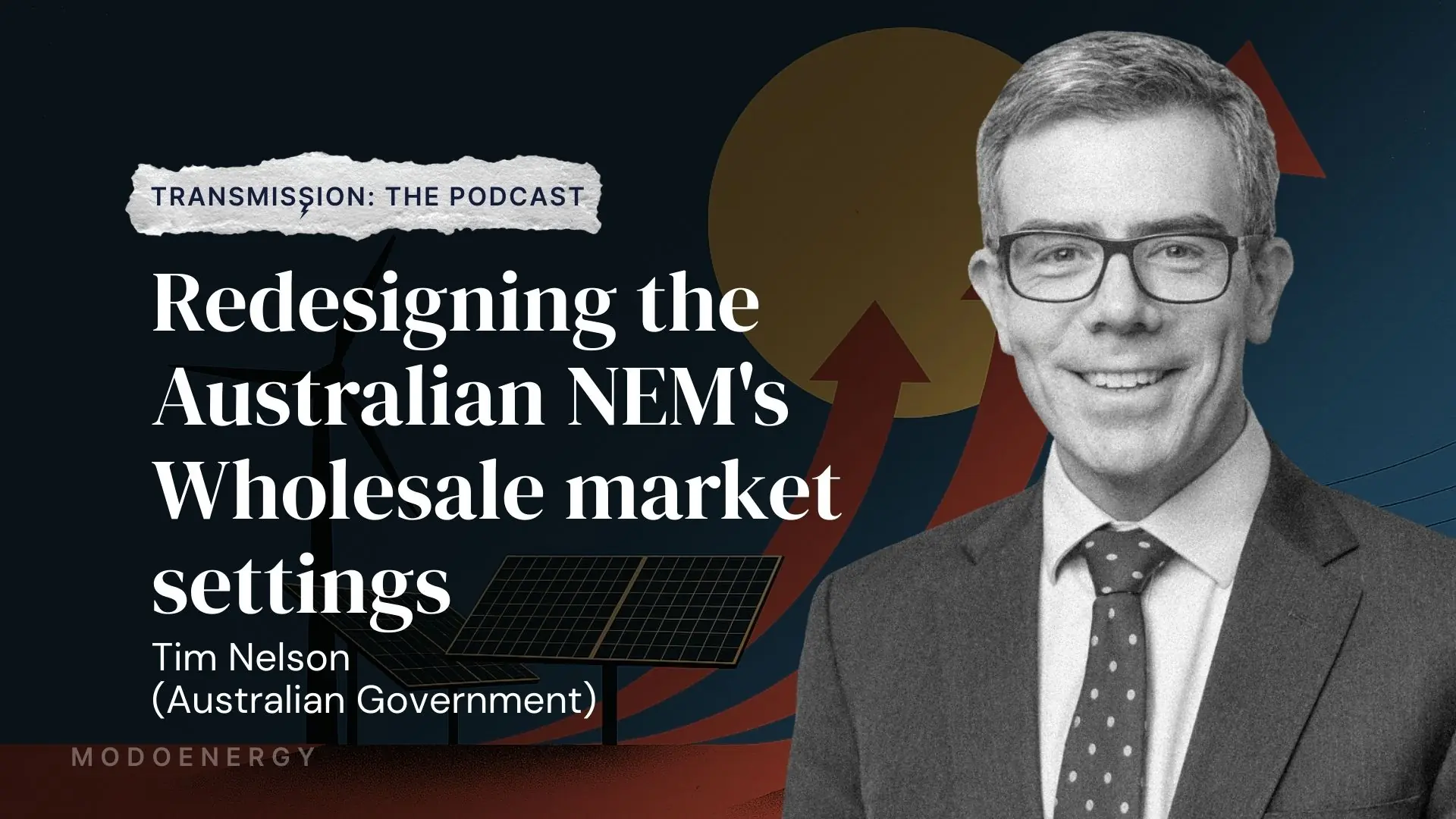Last month, Modo’s Alex Done gave a presentation at the Energy Storage Ireland 2022 Annual Conference in Dublin. It focused on the lessons that Ireland’s growing battery energy storage sector can take from the GB market. The team spoke to lots of lovely people - and there’s plenty of excitement around the potential of BESS in Ireland!

We’ve had a bunch of requests for the slides from Alex’s presentation to be made public. With that in mind, you can find those slides below.
Energy storage data transparency is key
Here at Modo, we’ve long held a belief that data transparency will be key to achieving our net-zero goals. Increased renewable penetration brings with it volatility and unpredictability of supply. We believe that battery energy storage technology will be vital in helping to harness this renewable energy. That’s why we’ve built our Asset Success platform - to provide transparency around revenue data for battery energy storage systems. This helps bolster the commercial case for BESS, encouraging investment in this key component of the future energy system.
One popular part of our platform is the ModoMap. This provides visibility of all battery energy storage assets in Great Britain. The slide below shows some key figures taken from the data behind the ModoMap.

- Current installed BESS capacity in GB stands at 1,567 MW.
- This is the total installed capacity of 77 operational sites, with an average duration of 1.1 hours.
- This equates to 1,725 MWh of installed capacity.
- To find out more about the difference between MW and MWh, check out our Energy Academy video on the subject.
Providing transparency on an asset-specific basis
Our asset database sits behind large parts of our Asset Success platform (including the ModoMap). This allows us to provide up-to-date information about every battery energy storage asset in Great Britain. This means that when you click on any asset on the ModoMap, you can see its unique profile - a bit like a baseball card for BESS assets. Check out Hill Farm’s below.

We then track each asset’s activity across a variety of markets. This allows us to build operational profiles of BESS assets. We use these operational profiles to inform our Leaderboard and our written Phase insights. (We dive deeper into Hill Farm’s operational profile later in this piece.)

This, in turn, allows us to track the revenues of each asset.


By taking the revenues of each BESS asset in Great Britain, we’re able to build a holistic picture of overall BESS revenue trends. This enables us to trace the evolution of the GB BESS revenue stack - spotting patterns and building the story of how we’ve got to where we are.

- Since the emergence of BESS as a trusted asset class, frequency response markets - like Firm Frequency Response and Dynamic Containment, among others - have provided the bulk of GB BESS revenues.
- However, over the latter part of 2021 and the beginning of 2022, merchant markets - specifically wholesale markets and the Balancing Mechanism - have also provided significant revenue streams for BESS.
Revenue agility is the new normal
As alluded to above, we’re starting to see BESS assets participate in a variety of different markets. Part of the reason for this is the saturation of frequency response markets. This is due to National Grid ESO’s lower Dynamic Containment volume requirements, which took effect in November 2021.

Wholesale price volatility accounts for another part of the reason we’ve seen this diversification of market participation.

On top of this, the entire industry is moving nearer and nearer to real-time procurement. We can see this play out in frequency response contract lengths, as shown on the slide below.

This combination of frequency response market saturation, greater merchant opportunity, and shorter-term contracts adds up to one thing: increased complexity of BESS optimisation.

The Modo daily battery energy storage revenue benchmark
Below you’ll see one of our absolute favourite graphs here at Modo. This tracks the daily revenues of every BESS asset in GB, split up by the different markets they were in. Each colour represents a different market. As you can see, BESS revenues have gone from being largely provided by a single, dominant market (Dynamic Containment, in teal), to being made up of lots of different markets. This is what we mean when we talk about the increasing complexity of BESS optimisation.

In the video below, our CEO Quentin Draper-Scrimshire breaks down the daily revenue benchmark graph, to explain exactly why battery energy storage optimisation is becoming more complex.
The three graphs below give a picture of three different micro-eras of BESS revenue makeup from the past couple of years.



So what does this type of cross-market optimisation look like in practice? Below is a case study of what one asset - Hill Farm again - did on 17th December 2021.

We’re only just getting started
We’re battery energy storage converts here at Modo, but we aren’t the only ones! The graph below shows National Grid ESO’s forecast of energy storage capacity in GB from now until 2050 (according to the 2021 Future Energy Scenarios’ ‘system transformation’ outcome).

We also produce our own forecast of BESS capacity - our battery buildout report.

- From March 2022 to the end of 2025, there is an expected increase of 4,995 MW of BESS capacity in GB.
- This consists of 99 projects that have all secured Capacity Market contracts for delivery during this period.
- By the end of 2025, the installed capacity of BESS in GB could exceed other forms of storage (such as pumped hydro), making BESS the dominant storage technology.
Publically traded energy storage funds in GB
There are also three publically listed funds in the GB battery energy storage space: Gresham House Energy Storage Fund plc, Gore Street Energy Storage Fund plc, and Harmony Energy Income Trust plc. Between them, their market capitalisation exceeds £1b.

- Gresham House ESF (ticker: GRID) is the largest of the three funds across all metrics, with a market capitalisation of £571m, net asset value (NAV) of £490m and portfolio of 425 MW.
- Harmony Energy Income Trust (ticker: HEIT) is the newest addition to the list of publicly traded BESS funds, following its IPO on 9th November 2021. HEIT floated on the London Stock Exchange issuing 210m shares, raising gross proceeds of £186.5m, and acquiring the Seed Portfolio of 213.5 MW shovel-ready sites from developer Harmony Energy- see here for more info.
- All three funds are trading at a premium to NAV as of 1 January 2022.
- In November 2021, the market capitalisation of UK and Ireland BESS funds exceeded £1b.
In total, the above three funds boast a current installed capacity of 635 MW across the UK and Ireland, with a substantial pipeline expected over the coming years. The slide below details the funds’ portfolio evolution since 2018, in addition to providing a forward-looking view until 2024.

- The total portfolio size of the above funds is expected to reach 2196 MW by 2024, ~3.5x today’s figure.
- Geographically, the majority of projects are located in GB, with Gore Street ESF the only fund to deploy capital in Ireland to date.
Recap
So, what lessons can Ireland learn from the GB battery energy storage market? Alex’s final slide nicely sums up everything covered above.

As ever, if you have any questions about these slides, please don’t hesitate to get in touch with us - either via Intercom (that little blue circle in the bottom-right corner of your screen) or through LinkedIn.
As for everyone we bumped into at the ESI conferent - thank you for making us feel so welcome. See you all next year!







